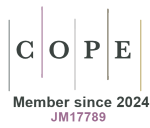The economic impact of 14 compassionate use programs for medicines in Italy, in the perspective of the National Health Service
DOI:
https://doi.org/10.33393/grhta.2024.2735Keywords:
Compassionate use program, Economic impact, ItalyAbstract
Background: Compassionate use programs (CUP) for medicines allow patients, not recruited in trials, accessing medicines before marketing approval. The evidence on the economic impact of CUP is limited to one paper that did not include the possible long-term economic impact of medicines used in CUP compared to alternative treatments, like avoided hospitalization costs. This paper aims at covering this information gap, updating and integrating the existing evidence, with a cost analysis in the perspective of the Italian National Health Service (SSN).
Methods: Data were retrieved from the Roche CUP Database, the peer-reviewed literature (e.g. published cost-effectiveness studies, if any), the gray literature (e.g. regional documents for the alternative treatment cost) and unpublished data (e.g. cost-effectiveness analysis provided for price and reimbursement negotiation for medicines in CUP).
Results: We retrieved data from 14 CUPs and 3,485 patients (70% affected by tumors) (Jan 2015-August 2022). The alternative treatment mean cost per patient ranged from € 11.1 k to € 18.8 k. The net economic benefit ranged from € 47 million to € 75 million (€ 13.5 k-€ 21.5 k per patient). Avoiding alternative treatments mostly contributes to the economic benefit. The long-term economic impact accounted for 20/30% of the net economic impact. The net economic benefit for cancer drugs ranged from € 12.6 million to € 40.0 million.
Conclusions: Despite research limitations, this paper provides additional evidence on the economic impact of CUP in Italy. This could represent the first step of a broader analysis of the economic impact of early access schemes for drugs.
References
- Polak TB, van Rosmalen J, Uyl-de Groot CA. Expanded Access as a source of real-world data: an overview of FDA and EMA approvals. Br J Clin Pharmacol. 2020;86(9):1819-1826. https://doi.org/10.1111/bcp.14284 PMID:32200551 DOI: https://doi.org/10.1111/bcp.14284
- Polak TB, Cucchi DGJ, van Rosmalen J, Uyl-de Groot CA. Real-world data from expanded access programmes in health technology assessments: a review of NICE technology appraisals. BMJ Open. 2022;12(1):e052186. https://doi.org/10.1136/bmjopen-2021-052186 PMID:34992108 DOI: https://doi.org/10.1136/bmjopen-2021-052186
- Bunnik EM, Aarts N. The Role of Physicians in Expanded Access to Investigational Drugs: A Mixed-Methods Study of Physicians’ Views and Experiences in The Netherlands. J Bioeth Inq. 2021;18(2):319-334. https://doi.org/10.1007/s11673-021-10090-7 PMID:33590374 DOI: https://doi.org/10.1007/s11673-021-10090-7
- Bunnik EM, Aarts N. What do patients with unmet medical needs want? A qualitative study of patients’ views and experiences with expanded access to unapproved, investigational treatments in the Netherlands. BMC Med Ethics. 2019;20(1):80. https://doi.org/10.1186/s12910-019-0420-8 PMID:31706313 DOI: https://doi.org/10.1186/s12910-019-0420-8
- Tarantola A, Otto MH, Armeni P, Costa F, Malandrini F, Jommi C. Early access programs for medicines: comparative analysis among France, Italy, Spain, and UK and focus on the Italian case. J Pharm Policy Pract. 2023 May 17;16(1):67. https://doi.org/10.1186/s40545-023-00570-z PMID: 37198599 DOI: https://doi.org/10.1186/s40545-023-00570-z
- Pham FY, Jacquet E, Taleb A, et al. Survival, cost and added therapeutic benefit of drugs granted early access through the French temporary authorization for use program in solid tumors from 2009 to 2019. Int J Cancer. 2022;151(8):1345-1354. https://doi.org/10.1002/ijc.34129 PMID:35603979 DOI: https://doi.org/10.1002/ijc.34129
- Cogez F, Gervais M, Cardon SC, et al. Is an early access program for an oncology drug an asset in the French pricing and reimbursement pathway? Value in Health. 2022, POSB211 (https://www.valueinhealthjournal.com/article/S1098-3015(21)02494-3/pdf) (Accessed November 2023).
- Jacquet E, Kerouani-Lafaye G, Grude F, et al. Comparative study on anticancer drug access times between FDA, EMA and the French temporary authorisation for use program over 13 years. Eur J Cancer. 2021;149:82-90. https://doi.org/10.1016/j.ejca.2021.03.008 PMID:33838392 DOI: https://doi.org/10.1016/j.ejca.2021.03.008
- Jommi C, Pantellini F, Stagi L, Verykiou M, Cavazza M. The economic impact of compassionate use of medicines. BMC Health Serv Res. 2021;21(1):1303. https://doi.org/10.1186/s12913-021-07255-w PMID:34863155 DOI: https://doi.org/10.1186/s12913-021-07255-w
- Pilunni D, Navarra P. Compassionate drug uses in Italy. Analysis of regional and local diffusion. Ann Ist Super Sanita. 2023;59(1):43-50. PMID:36974704
- Pilunni D, Daloisio V, Campopiano R, Pani M, Navarra P. Compassionate drug uses and saving for the national health system: the case study of Fondazione Policlinico Gemelli. Eur Rev Med Pharmacol Sci. 2021;25(20):6365-6377. PMID:34730218
- Agenzia Italiana del Farmaco (AIFA) Farmaci uso compassionevole https://www.aifa.gov.it/farmaci-a-uso-compassionevole (Accessed November 2023).










